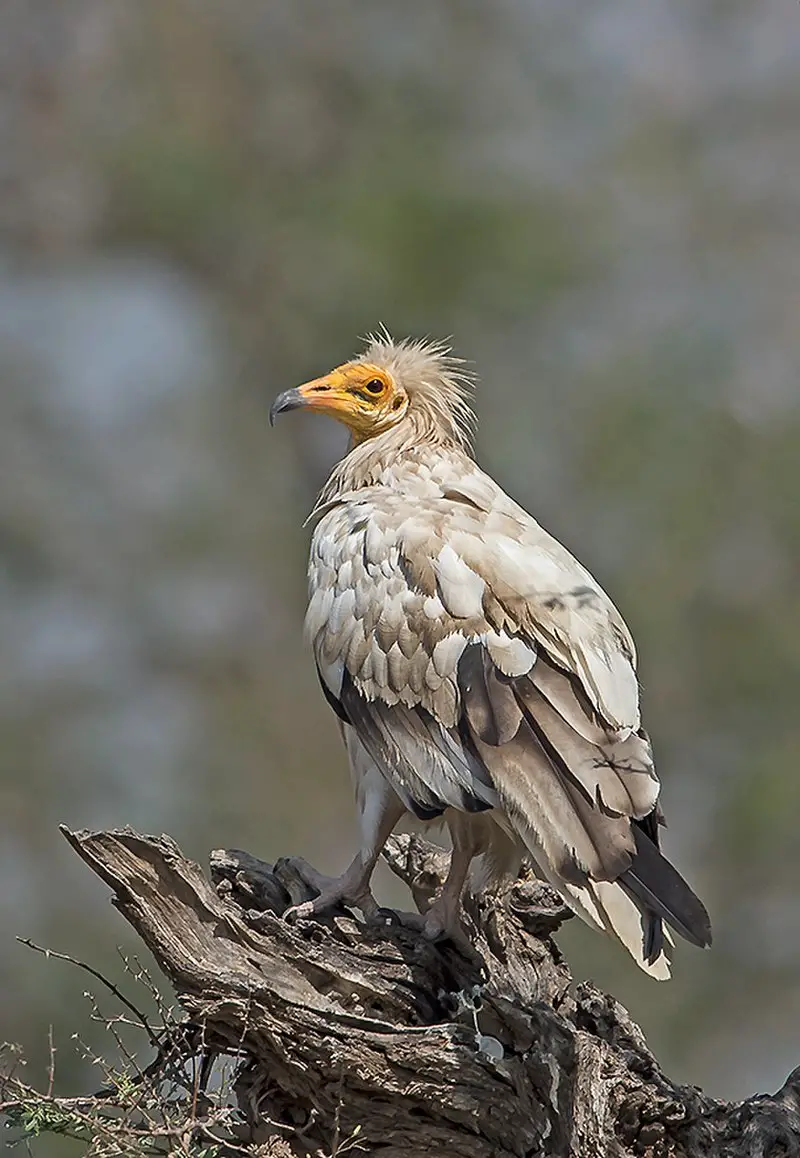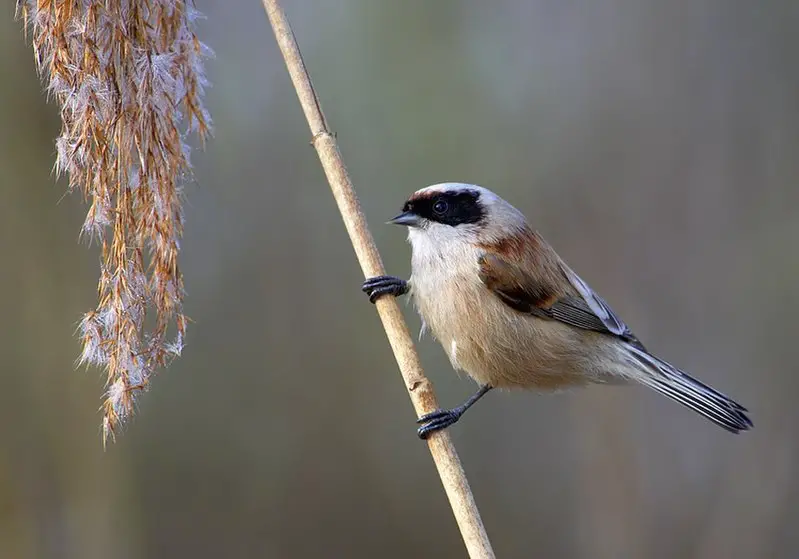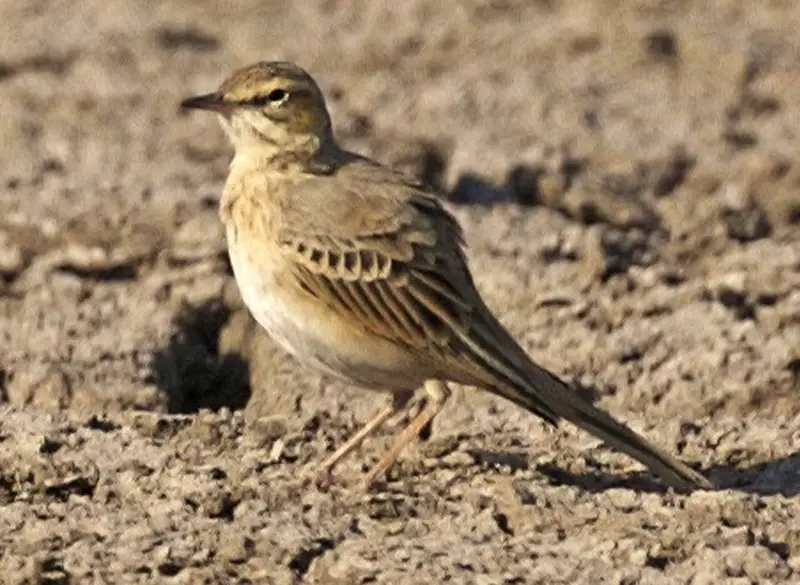Albania is a beautiful country located in Southeastern Europe, known for its stunning landscapes and rich biodiversity, including a variety of bird species.
The country’s unique position, with a coastline on the Adriatic and Ionian seas and surrounded by mountains and hills, creates a diverse range of habitats for birds to thrive in.
Albania has become a popular destination for birdwatchers, offering opportunities to observe both resident and migratory species in their natural habitats. From the majestic eagles soaring above the mountains to the colorful songbirds singing in the forests, Albania’s birdlife is a true wonder to behold.
This article will explore some of the most fascinating birds found in Albania, their habitat, behaviour, migration patterns, and conservation efforts in the country.
1. Bustard

Bustards are large, terrestrial birds that inhabit dry grassland areas and the steppes of the Old World. They range from 40-150 cm in length and belong to the family Otididae.
Bustards have an omnivorous diet consisting of leaves, buds, seeds, fruit as well as small vertebrates and invertebrates.
These birds usually live a solitary life but can be seen gathering around water sources or food during certain times of year such as mating season.
Due to their large size they are vulnerable to predation by foxes or other animals which is why they tend to remain alert at all times.
When in open spaces while relying on camouflage for protection against predators when out in tall vegetation coverings.Scientific classification:
| Kingdom | Animalia |
| Phylum | Chordata |
| Class | Aves |
| Clade | Otidimorphae |
| Order | Otidiformes Wagler, 1830 |
| Family | Otididae Rafinesque, 1815 |
Also Featured In: Common Birds in India, Turkey Birds You Should Know
2. Collared Pratincole

The Collared Pratincole is a small wader bird native to the Old World. It has distinctive long wings that are reddish-brown in color and have white tips, which give it its name.
Its body is mostly dark brown with some lighter spots along its back and sides. The bill of this species is short and pointed, making it a specialist for eating insects from mudflats or shallow waters.
During breeding season, they form loud flocks that can be heard from miles away when calling out their distinct song; during non-breeding time they disperse into smaller groups while searching for food sources in drier regions such as grasslands or fields.
This species relies heavily on open habitats where there are plenty of places to hunt for food throughout the year.Scientific classification:
| Kingdom | Animalia |
| Phylum | Chordata |
| Class | Aves |
| Order | Charadriiformes |
| Family | Glareolidae |
| Genus | Glareola |
| Species | G. pratincola |
Also Featured In: Beautiful Brazilian Birds, Birds That Live in Iraq
3. Grebes

Grebes are a type of diving bird found in freshwater habitats around the world. They belong to the order Podicipediformes and have 22 species that exist across six genera.
Some species can also be found in marine environments during their migration or winter season, and some even live flightless lives on stable lakes.
Grebes vary greatly between regions; for example, they range from 4-32 inches long with anywhere from 8-30 ounces of weight depending on which species it is.
Their plumage may be black, browns/grays or whites but usually consist of bright colors such as yellows, blues and greens while underwater they use these feathers to help them streamline through the water quickly.Scientific classification:
| Kingdom | Animalia |
| Phylum | Chordata |
| Class | Aves |
| Clade | Neoaves |
| Clade | Mirandornithes |
| Order | Podicipediformes Fürbringer, 1888 |
| Family | Podicipedidae Bonaparte, 1831 |
Also Featured In: Common Birds in Japan, Water Birds Live around Us
4. Shrike

Shrikes are small passerine birds of the family Laniidae, with 34 species in four genera. They get their name from Old English word “scrīc”, which refers to their shriek-like call.
These birds have earned the nickname ‘butcherbirds’ due to their feeding habits; they impale prey on thorns or barbed wire fences for later consumption.
Shrikes also tend to be aggressive predators and hunt a wide range of animals such as insects, small reptiles, rodents and even other smaller bird species.
In terms of physical appearance, these songbirds can vary greatly depending on the specific genus but usually boast a large hooked bill atop an impressive crest along with bright colors like gray, black or brownish hues across its feathers.
It’s clear shrike is quite remarkable creature that has gained notoriety for both hunting prowess and distinctive vocalizations.Scientific classification:
| Kingdom | Animalia |
| Phylum | Chordata |
| Class | Aves |
| Order | Passeriformes |
| Superfamily | Corvoidea |
| Family | Laniidae Rafinesque, 1815 |
Also Featured In: Egyptian Birds, Common Uzbekistan Birds
5. Egyptian Vulture

The Egyptian Vulture is a small Old World vulture known for its distinctive wedge-shaped tail and contrasting underwing pattern.
It has been found from the Iberian Peninsula through North Africa to India, making it one of the most widespread birds in that area.
This species eats mostly carrion but will also feed on eggs and small prey if they can find them. Its diet consists mainly of lizards, insects and other invertebrates as well as fruit like figs, grapes or mulberries when available.
The Egyptian Vulture plays an important role in ecosystems by helping to clean up carcasses which could otherwise spread disease or attract predators such as jackals into human settlements.
They are considered vulnerable due to threats including habitat destruction, electrocution from power lines and accidental poisoning – all factors contributing towards their decline in numbers across their rangeScientific classification:
| Kingdom | Animalia |
| Phylum | Chordata |
| Class | Aves |
| Order | Accipitriformes |
| Family | Accipitridae |
| Genus | Neophron Savigny, 1809 |
| Species | N. percnopterus |
Also Featured In: Asian Birds, Gujarati Birds
6. Eurasian Reed Warbler

The Eurasian reed warbler (Acrocephalus scirpaceus) is a species of Old World Warbler native to the temperate parts of Europe and Asia.
It breeds in wetlands such as marshes, ponds and rivers with dense vegetation like reeds or tall grasses.
During its wintering season, it migrates southward to sub-Saharan Africa where there are milder conditions.
This small bird has streaked brown plumage on the upperparts and white underparts which makes it difficult for predators to spot among the foliage.
Its diet consists mainly of insects including aphids, caterpillars larvae and moths caught while flying over water or by gleaning from plants growing near water bodies.
The male sings an attractive song consisting of several phrases repeated one after another as part of their courtship display during breeding season in order attract females for mating purposes.Scientific classification:
| Kingdom | Animalia |
| Phylum | Chordata |
| Class | Aves |
| Order | Passeriformes |
| Family | Acrocephalidae |
| Genus | Acrocephalus |
| Species | A. scirpaceus |
Also Featured In: Common Algerian Birds , Syrian Birds You Need to Know
7. Bearded Reedling

The Bearded Reedling is a small passerine bird found in reed-beds across Europe, Asia and North Africa.
It is easily identified by its distinct black and white plumage with males having yellow faces.
This species belongs to the only family of birds known as Panuridae and was first described by Carl Linnaeus back in 1758.
They feed on insects such as beetles, flies, moths among others but also consume seeds from plants like sedges or rushes during winter months when food availability decreases significantly.
These birds are territorial meaning that they have their own area where they live which can vary from 8 to 12 hectares depending on the seasonality of insect abundance within these areas making them an important part for maintaining healthy ecosystems in wetlands around their range.Scientific classification:
| Kingdom | Animalia |
| Phylum | Chordata |
| Class | Aves |
| Order | Passeriformes |
| Family | Panuridae Des Murs, 1860 |
| Genus | Panurus Koch, 1816 |
| Species | P. biarmicus |
Also Featured In: Birds of United Kingdom, Ukrainian Birds You Should Know
8. Western Capercaillie

The Western Capercaillie is the largest bird among all grouse species. It has a wingspan of around 2 to 3 feet and can weigh up to 16 pounds. Its body is covered in rich, dark brown feathers which have light speckles throughout them.
This beautiful bird inhabits parts of Europe and the Palearctic region where it feeds on berries, seeds and buds from trees like birch and pine.
In winter months they’ll also eat mushrooms when available too. They live in forests with plenty of dense vegetation so that they can hide away from predators when necessary.
During mating season males will perform elaborate courtship displays to attract females – making this one amazing creature indeed.Scientific classification:
| Kingdom | Animalia |
| Phylum | Chordata |
| Class | Aves |
| Order | Galliformes |
| Family | Phasianidae |
| Genus | Tetrao |
| Species | T. urogallus |
Also Featured In: Birds of Poland, Belarus Birds You Should Know
9. Eurasian Penduline Tit

The Eurasian penduline tit is a passerine bird of the genus Remiz which can be found widely across the western Palearctic.
It migrates to more northern parts in summer, while staying resident in its southern range during winter months.
This species experienced an expansion of its breeding grounds throughout Western Europe between 1980s and 1990s, thus increasing its population significantly.
The Penduline Tit has various striking features like bright yellow underparts with black streaks on sides.
Greyish-brown upper part with white underside and pale eye line along head sides as well as distinctive tail nest made from fibers and mosses hanging from trees or shrubs like a pendulum hence their name ‘Penduline’.
These birds feed mainly on insects but also eat some seeds especially sunflower seeds making them popular garden visitors for many people.Scientific classification:
| Kingdom | Animalia |
| Phylum | Chordata |
| Class | Aves |
| Order | Passeriformes |
| Family | Remizidae |
| Genus | Remiz |
| Species | R. pendulinus |
Also Featured In: Birds of Morocco, Native Birds of Kazakhstan
10. Sylviid Warblers

The Sylviid warblers are a family of passerine birds found in Eurasia and Africa. They include the typical warblers as well as babblers that were formerly part of the Old World babbler family.
These birds have slender bodies, pointed wings, long tails and strong legs adapted for ground-dwelling habits like running or hopping along branches.
The male often has bright colors while females are usually duller in coloration with more muted plumage patterns than males.
Some species also show sexual dimorphism where one sex may be larger or smaller than its counterpart; for instance some species may have longer tail feathers on the female side compared to their male counterparts.
Many members of this group feed on insects but some specialize on seeds, fruits, nectar or even frogs.Scientific classification:
| Kingdom | Animalia |
| Phylum | Chordata |
| Class | Aves |
| Order | Passeriformes |
| Superfamily | Sylvioidea |
| Family | Sylviidae Leach, 1820 |
Also Featured In: Common Serbian Birds, Bulgarian Birds
11. Treecreepers

Treecreepers are small passerine birds found in wooded areas of the Northern Hemisphere and sub-Saharan Africa.
They have dull colored plumage, long curved bills, stiff tails and strong feet that help them to climb up tree trunks while searching for food such as insects and spiders.
The two genera Certhia and Salpornis include eleven species which can be identified by their distinct call – a high pitched ‘tsee-tsit’.
Treecreepers build cup shaped nests on trees usually near the base or middle trunk using mosses, lichens, grasses with leaves inside them to provide insulation from cold temperatures.
These birds also use bark crevices during winter months when they shelter in groups together against extreme weather conditions.Scientific classification:
| Kingdom | Animalia |
| Phylum | Chordata |
| Class | Aves |
| Order | Passeriformes |
| Superfamily | Certhioidea |
| Family | Certhiidae Leach, 1820 |
Also Featured In: Flocks Birds around Us, Common Denmark Birds
12. Motacillidae

Motacillidae is a family of small passerine birds consisting of around 70 species. They are found across Europe, Africa, Asia and even Alaska with two migratory breeding species.
The three genera they belong to include wagtails which typically have medium to long tails; longclaws that can only be spotted in the Afrotropics; and pipits which possess the most cosmopolitan distribution worldwide.
These birds feed on insects as well as seeds for their diets and are usually seen in open habitats such grasslands or wetlands where food sources like invertebrates can easily be accessed.
Most Motacillidae species also use mud nests during breeding season making them easy targets for predators so it’s important we protect these beautiful creatures.Scientific classification:
| Kingdom | Animalia |
| Phylum | Chordata |
| Class | Aves |
| Order | Passeriformes |
| Superfamily | Passeroidea |
| Family | Motacillidae Horsfield, 1821 |
Also Featured In: Birds of Belgium, Birds You’ll Find in Moldova
13. Dalmatian Pelican

The Dalmatian pelican is an impressive bird, the largest of its family and one of the largest freshwater birds in the world.
Its wingspan rivals even those of albatrosses and it flies gracefully with other members in synchrony.
It has a wide range across Central Eurasia stretching from Mediterranean to India and Southeast Asia, as well as parts of Russia.
This large species has white feathers which are generally lightly tinged with grey or yellow around their head; they have long beaks that can reach up to 40cm in length.
Their unique physical characteristics make them stand out among other waterbirds – so if you ever get lucky enough to spot one while exploring nature, take some time to appreciate this majestic creature.Scientific classification:
| Kingdom | Animalia |
| Phylum | Chordata |
| Class | Aves |
| Order | Pelecaniformes |
| Family | Pelecanidae |
| Genus | Pelecanus |
| Species | P. crispus |
Also Featured In: Most Beautiful birds of Greece, Most Common Romanian Birds
14. Western Rock Nuthatch

The Western Rock Nuthatch is a small passerine bird that can be found in parts of Europe and the Middle East. It has an olive-grey back, blackish wings, white underparts with a grey breast band, and yellow vent area.
Its legs are grey and its bill is short and broad. This species prefers rocky habitats such as mountainside cliffs or crags used for nesting sites where they build cup shaped nests using mud mixed with grasses or feathers.
They mainly eat insects but also consume seeds during winter months when food is scarce.
The western rock nuthatch remains largely resident apart from some post-breeding dispersal making it relatively easy to spot year round if you know what you’re looking for.Scientific classification:
| Kingdom | Animalia |
| Phylum | Chordata |
| Class | Aves |
| Order | Passeriformes |
| Family | Sittidae |
| Genus | Sitta |
| Species | S. neumayer |
Also Featured In: Birds Commonly Found in Slovenia, Common Birds of Lesbos Island
15. Black-Headed Bunting

The Black-headed Bunting is a passerine bird found in the Emberizidae family. It breeds mainly in south-east Europe and east to Iran, with some migrating further into India and south-east Asia during winter.
Being an open grassland species, it usually travels in flocks looking for grain and seed to eat.
Adult males have distinctive black heads that contrast against their brown upperparts, yellow underparts and white wing patches which are readily visible while they’re flying.
Females lack this bright plumage but still show a dark streak across their head instead.
They make loud calls when gathering together or defending territories from other birds of similar size.Scientific classification:
| Kingdom | Animalia |
| Phylum | Chordata |
| Class | Aves |
| Order | Passeriformes |
| Family | Emberizidae |
| Genus | Emberiza |
| Species | E. melanocephala |
16. Woodchat Shrike

The Woodchat Shrike is a unique species of bird belonging to the shrike family. It has an unmistakable red-brown crown and nape that make it easily distinguishable from other birds.
This species mainly feeds on insects, but will also take small vertebrates if they are available.
They have adapted well to living in open wooded areas with scattered trees such as orchards, where there’s plenty of bare ground for them to hunt on.
During breeding season the Woodchat Shrikes can be found throughout Southern Europe, Middle East and Northwest Africa; while during wintertime these fascinating creatures migrate south towards tropical regions of Africa for warmer weather conditions.
All in all this species makes a fantastic addition to any outdoor environment – so why not give them some extra attention next time you spot one?Scientific classification:
| Kingdom | Animalia |
| Phylum | Chordata |
| Class | Aves |
| Order | Passeriformes |
| Family | Laniidae |
| Genus | Lanius |
| Species | L. senator |
Also Featured In: Common Slovakian Birds, Common Cornwall Birds
17. Eurasian Griffon Vulture

The Eurasian griffon vulture (Gyps fulvus) is an impressive Old World bird of prey. It has a wingspan that can reach up to 4.8 meters and is usually between 93-122 cm in length.
Its body feathers are dark brown with lighter areas on its head, chest and wings while the underside of its tail and flight feathers are white.
This species feeds primarily on carrion but will also scavenge for food when necessary; they have been known to form large groups in order to increase their chances of finding a meal or being able to steal one from another group member.
The Griffon Vulture’s natural habitat ranges across Europe, Asia Minor, North Africa into parts of India as well as some islands off the coast such as Crete and Cyprus.
They nest fairly high up either alone or in small colonies – often using old nests built by other birds like eagles or storks to save time.Scientific classification:
| Kingdom | Animalia |
| Phylum | Chordata |
| Class | Aves |
| Order | Accipitriformes |
| Family | Accipitridae |
| Genus | Gyps |
| Species | G. fulvus |
Also Featured In: Birds found in portugal, Birds that Live in Croatia
18. White-Winged Tern

The White-winged Tern is a small species of tern found across much of the world, from Europe to Africa and Asia, inhabiting fresh water habitats.
With its scientific name Chlidonias leucopterus or Chlidonias leucoptera coming from Ancient Greek meaning ‘swallow-like’, it has white wings giving it an unmistakable appearance in flight.
It feeds on insects by swooping down over water surfaces at high speed and snatching them up with its beak while skimming the surface.
This bird also nests near bodies of freshwater such as lakes, rivers and marshes making use of reeds for cover against predators when they’re raising their chicks.
A beautiful sight to behold wherever they are found.Scientific classification:
| Kingdom | Animalia |
| Phylum | Chordata |
| Class | Aves |
| Order | Charadriiformes |
| Family | Laridae |
| Genus | Chlidonias |
| Species | C. leucopterus |
Also Featured In: Bahrain birds, Armenian Birds You Should Know
19. Tawny Pipit

The Tawny Pipit is a medium-large passerine bird that breeds across much of the central Palearctic region.
It has an impressive range, stretching from northwest Africa and Portugal to Central Siberia and Inner Mongolia.
During winter months it migrates southwards to tropical Africa and India where it spends its time in grasslands.
Its scientific name ‘Anthus campestris’ comes from Latin; Anthus meaning ‘smallbird’, while Campestris means “of open country or fields”.
The Tawny Pipit displays bold streaks on its back with sandy brown upper parts which blend into white underparts.
It can be identified by its distinctive song too – consisting of several rising notes followed by one lower trill note at the end.Scientific classification:
| Kingdom | Animalia |
| Phylum | Chordata |
| Class | Aves |
| Order | Passeriformes |
| Family | Motacillidae |
| Genus | Anthus |
| Species | A. campestris |
Also Featured In: Andorra birds, Common Birds of Mumbai
20. Red-Rumped Swallow

The Red-rumped Swallow is a beautiful bird of the swallow family that can be found in temperate southern Europe and Asia all the way from Portugal to Japan.
It breeds in open hilly country, while Indian and African birds are resident year round; however, European and other Asian swallows migrate south for winter to Africa or India.
These graceful creatures have even been observed as vagrants on Christmas Island. These small passerine birds are known for their striking red rumps which contrast against their otherwise dark blue plumage.
The diet of these swallows consist primarily of insects such as flies, bees, wasps etc., which they catch during short flights close to ground level.
So if you ever find yourself out in an open field near some hills this summer keep your eyes peeled for one of nature’s most stunning avian beauties -the Red-rumped Swallow.Scientific classification:
| Kingdom | Animalia |
| Phylum | Chordata |
| Class | Aves |
| Order | Passeriformes |
| Family | Hirundinidae |
| Genus | Cecropis |
| Species | C. daurica |
Also Featured In: Swallows Species, Birds Live in Tunisia
21. Lesser Grey Shrike

The lesser grey shrike is a migratory bird that breeds in parts of Europe and Asia. During the autumn, it travels to southern Africa for the winter season and returns in the spring.
It is a rare sight in western Europe, often seen as an erratic during the spring or autumn. This shrike is similar in appearance to the great grey shrike, another member of its family.Scientific classification:
| Kingdom | Animalia |
| Phylum | Chordata |
| Class | Aves |
| Order | Passeriformes |
| Family | Laniidae |
| Genus | Lanius |
| Species | L. minor |
Also Featured In: Italian Birds You Should Know, Birds Found in Hungary